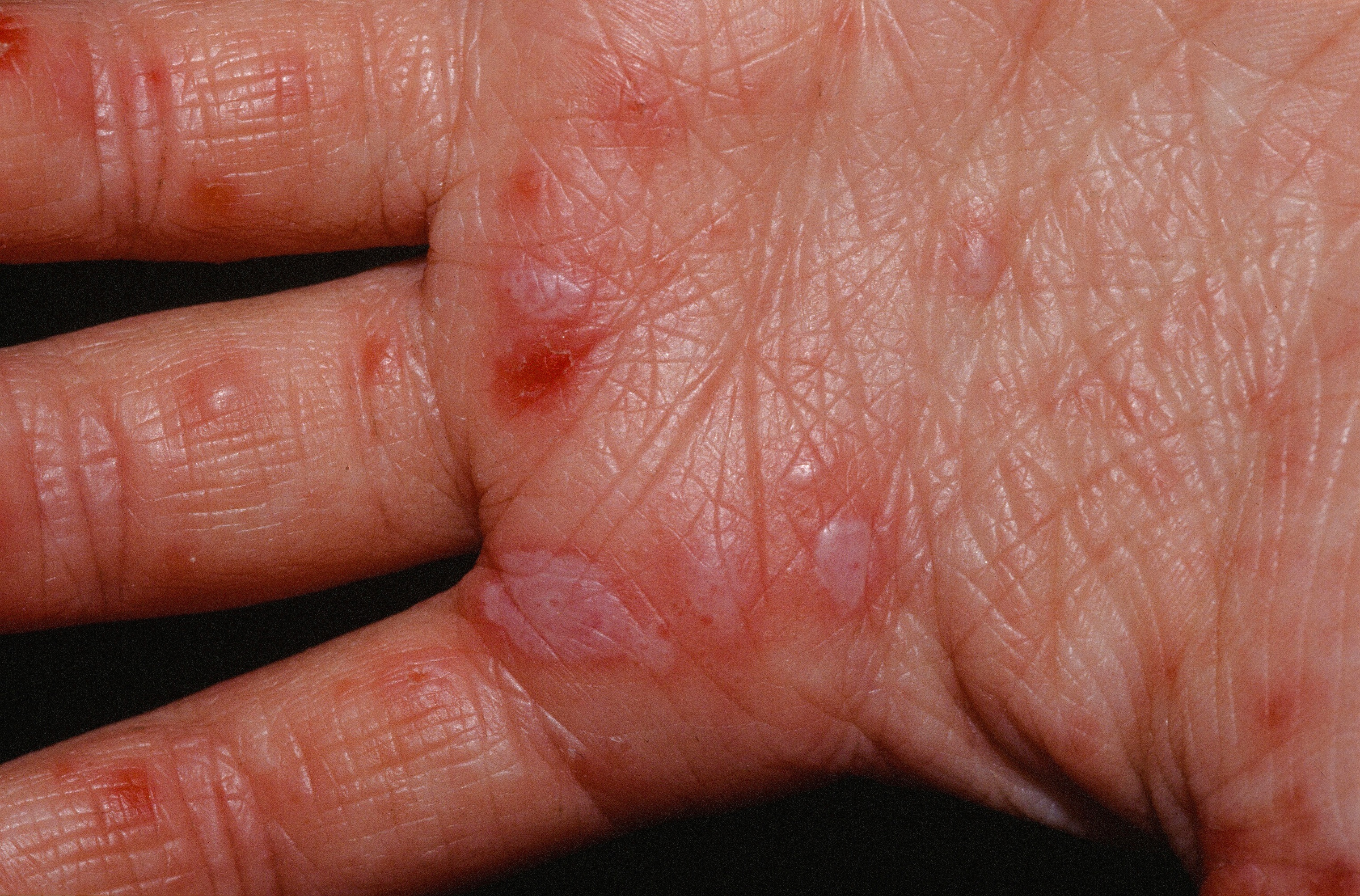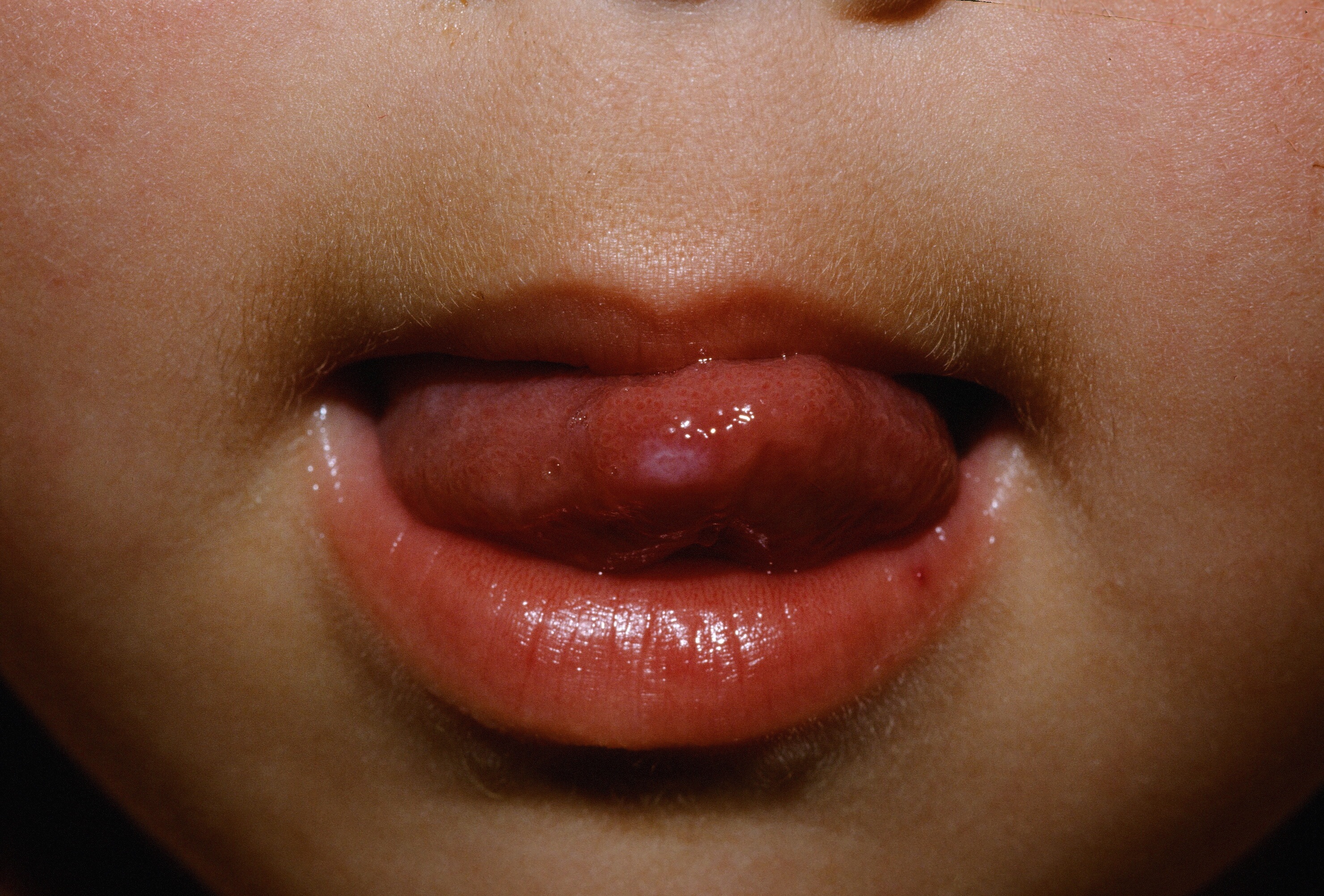
Silver, grey or white vesicles occur on the hands, feet and mouth.
HAND, FOOT, AND MOUTH DISEASE
Hand, Foot and Mouth Disease (HFMD) is an infection usually caused by the enterovirus A which consists of 25 serotypes including multiple Coxsackie A viruses, multiple enteroviruses, simian enteroviruses and baboon enterovirus A13. Young children are typically affected and epidemics are common. A low-grade fever, malaise, and lymphadenopathy may accompany the vesicles.
- The patient is usually < 5 years of age. The average in one study was 2.4 years.
- Eczema herpeticum lesions are seen in 20% of cases.
- In the US, the predominant cause is Coxsackievirus A16.
- Treatment is usually not needed as the disease spontaneously remits after a week or so.
- Skin lesions, stool, and respiratory secretions are contagious so good hand washing should be done.
- Viral particles have been found in the stool for up to 6 weeks.
- The transmission is: fecal-‐oral, vesicle fluid, respiratory secretions.
- Rare cases of aseptic meningitis, brainstem encephalitis and acute flaccid paralysis may complicate the clinical course.
- Of note, Herpangina and HFMD are both caused by Human enteroviruses e.g. coxsackie but they may have different serotypes. Both diseases tend to affect young children.
Clinical
The child usually develops mild, nonspecific symptoms for a day or two, e.g., mild fever, malaise. Then, small silvery vesicles develop on the palms, soles, and in the mouth. The buttocks is a common site as well. Eczema herpeticum lesions are seen in 20% of cases.
Constipation is common. Multiple children in one family may be affected. Occasionally, a parent will develop symptoms.
A more severe form with fevers, joint pains, and widespread painful eruptions has been reported and is associated with coxsackie virus A6 (some call "eczema coxsackium") . Very rarely, meningitis, encephalitis, interstitial pneumonitis, myocarditis, or acute flaccid paralysis may develop and some patients have died.
Nail changes associated with HFMD usually occurs within 1 to 2 months after onset, mainly presents as onychomadesis, and is a self-limited process.
Questions to ask
- When did it start?
- Who else in the family has it?
- How are you feeling? Lack of energy? Joint pain? Swollen glands?
- Any fever?
- Any headache? Constipation?
- Where do you have the spots? Mouth? Hands? Feet? Buttocks?
- Any trouble eating (because of mouth sores)?

A lesion on the tongue.
RegionalDerm
Who is Dr. White? | Privacy Policy | FAQs | Use of Images | Contact Dr. White
It is not the intention of RegionalDerm.com to provide specific medical advice, diagnosis or treatment. RegionalDerm.com only intends to provide users with information regarding various medical conditions for educational purposes and will not provide specific medical advice. Information on RegionalDerm.com is not intended as a substitute for seeking medical treatment and you should always seek the advice of a qualified healthcare provider for diagnosis and for answers to your individual questions. Information contained on RegionalDerm.com should never cause you to disregard professional medical advice or delay seeking treatment. If you live in the United States and believe you are having a medical emergency call 911 immediately.

